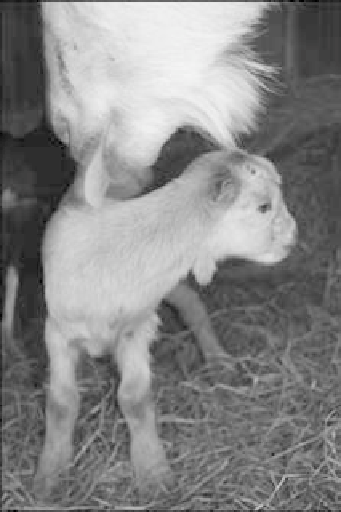Agriculture Reference
In-Depth Information
both consume about 10 percent of their body weight in their first milk, called colostrum, within
the first day.
This baby goat is getting a final cleaning by her mother, although she's already up on her feet.
Colostrum is highly nutritious and beneficial for the kids and lambs. It has natural antibodies that
are passed down from the mother to the babies. It's also really thick and rich to help stimulate their
digestive systems right away.
Here is where two schools of management really diverge. Some herd owners will separate the kids
and lambs right away, and raise them apart from their mothers. This can definitely increase the
amount of milk available from the goats and sheep you are milking. The downside is the multiple
times per day that you need to feed your kids. Others take a more natural herd approach and
leave the babies with their mothers for feeding throughout the day. You can still get plenty of milk
using this method if you begin separating the kids from their mothers at night, and milk the does
or ewes first thing in the morning. You'll only get one milking per day because the kid or lamb
will nurse the mother throughout the day, but this prevents you from having to bottle feed a large
number of babies.
If you have more babies than teats (nipples) it can create a situation where one of the babies isn't
getting enough milk. In this situation you have a couple different options. Bottle feeding is one
of the most common. Another common method is to foster the baby out to another mother who
maybe only has one lamb or kid and plenty of milk. In order to do this you'll have to mask the














